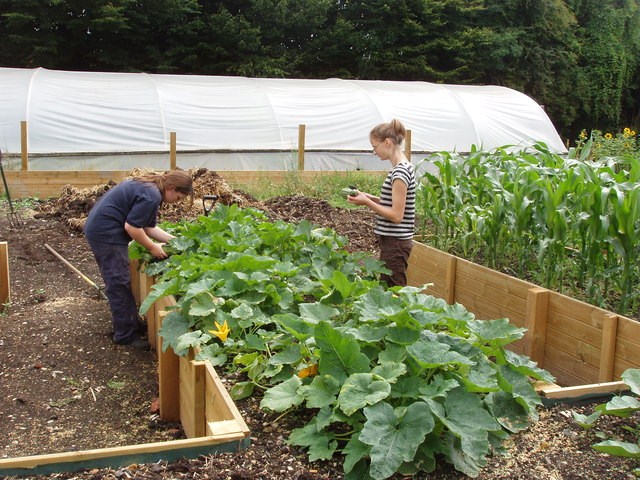When a person becomes disabled and unable to enjoy the simple hobbies we all take for granted, one method of alleviating this is to create an easy-access raised bed garden. Gardening is a very therapeutic means of relaxing if no strain is put on the disabled person’s painful often restricted joints.

Raised bed gardens can be a great help to the disabled person, not only does it make gardening possible but it is very therapeutic; making them feel happier, more positive, and healthier.
However, before the construction of a disabled raised bed for gardening, there are certain fundamental design concepts to be considered. These include the materials to be used, and the size, access, and location of the raised bed. A major consideration is whether the raised bed is for a wheelchair user or, someone who uses walking aids such as a stick or crutches.
Safe, level access is also a requirement, preferably with a hard smooth surface free from stones or other loose items which would impede a wheelchair or infirm person using walking aids.
A raised bed garden can serve several purposes such as, it provides an isolated area to cultivate flowers, herbs, or vegetables or to cater to the disabled person who is unable to tend to a normal garden.
If the raised bed garden is for the use of a disabled person, then certain key considerations should be kept in mind. These include wheelchair access if required, the height and width of the raised bed, and its location in relation to the house.
Here we discuss raised gardens and in particular raised gardens for a disabled person’s use.
We begin by examining the design to determine the type of raised garden bed most suitable for a disabled person’s needs.
This can make a big difference, as the person will have to sit beside the bed and twist his or her body around to work in the garden. The bed can be made more accessible to a wheelchair user by mounting the bed on top of the legs enabling the user to sit closer with his or her legs underneath.
The amount of space available will determine the dimensions of the raised bed. Is there enough room to gain access to both sides of the bed or will there have to be stretching involved for the person to reach the other side? If you do not feel confident or fit enough to make this determination, call in the local carpenter who will be only too happy to help.
The condition of pathways is equally important to people on crutches as it is to wheelchair users, and people with balance problems. Paths should be hard and smooth, rather than loose stones or gravel. If you are using a wheelchair stair lift make sure the path is accessible to everyone
I have given the recommended dimensions for a raised garden bed for the disabled below, presuming you have the space available and good access to the raised bed.
In the next article in the series we address how a raised garden bed can be made; however, these can be purchased from a local garden center or ordered online. It is probably better to visit a garden center where they are usually on display, so you can examine them for suitability.
Cost varies but, the average price for a PVC or wood self-assembly raised garden is under $300, and they are available from Amazon.
Must Read:
Raised beds for gardening are a popular means of cultivating herbs and flowers. However, the creation of raised garden beds for the disabled will give a great deal of pleasure to disabled people whether or not they are wheelchair-bound.
Nonetheless, there are certain criteria to be considered when designing the raised bed such as its size, location, safety, and accessibility.
Although these beds can be a DIY project as we cover in the next article, if a person does not have the physical capacity to make one him or herself, then they can be store-bought.
Raised Bed Gardening
In this article, we address the need for raised bed gardening as well as how to create one.
- A Raised Bed Garden for a Disabled Person
- How to Make a Raised Bed in a Garden